All puppies will chew everything for numerous reasons. Although chewing is a natural behavior, it’s important to train your puppy on how to stop chewing on everything by having an endless supply of interactive chew toys for your puppy. Destructive chewing is easily manageable, and most times can be anticipated.
That said, puppy training on how to train your furry best friend to stop chewing everything is the most rewarding of all. Many pet parents think that puppies are too small to train. Nonetheless, this is the most important time in your new best friend’s life. Training Fido can begin as soon as they are 8 weeks of age. This starts off by teaching your pup the basic house rules, as well as a few easy obedience commands.
Your Puppy’s Teeth
Puppies suffer the most with teething from 3 to 4 months. Sometimes this lasts much longer. At around 3 to 4 weeks, your pup’s first teeth push through the gums. This is painful! Providing ice cubes, frozen carrots, and frozen Kong toys helps to provide some relief. When his adult teeth begin to come through at around 4 and half months, your pooch will have minimal discomfort from teething.
Most behavioral puppy chewing problems begin when your furry best friend is bored, or feeling lonely. Try to always have your puppy nearby, so that he does not feel lonely or bored. It’s also important that you have a wide range of colorful and interactive chew toys for your furry best friend that are safe, and non-toxic. Keep in mind that your puppy is going to be chewing these all day long, so they have to be 100% non-toxic.
One of the most important things you can do for your new furry best friend is to understand him. Thinking like a pup and understanding that he’s teething, allows for pet parents to more easily understand why their puppy is destructively chewing. This also helps with training your puppy to chew only his puppy chew toys, and to stop chewing everything in your home.
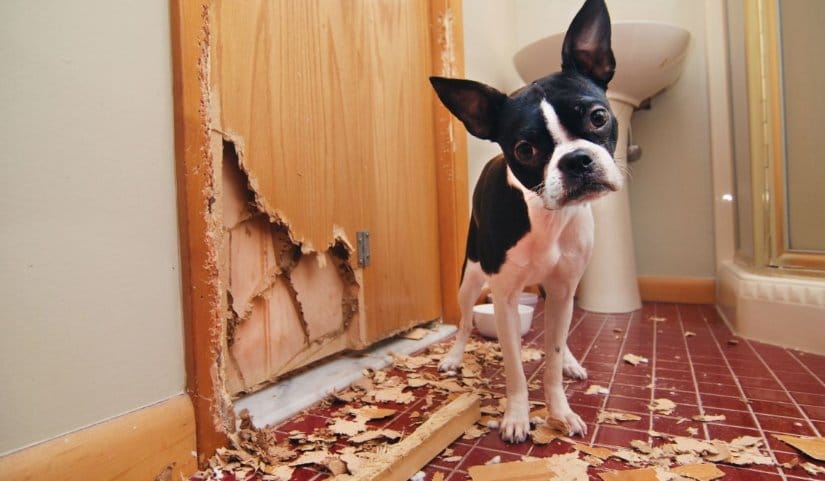
Just like us, dogs suffer from separation anxiety, stress, and boredom, storm phobia and of course, lots of energy. Most puppies that suffer from stress are often mistaken as “bad dogs.” Of course, this is not the case. The key to success with your pooch chewing everything in your home is patience, and having an endless supply of chew toys. Here are some tips:
- As your pup gets older he will need to have daily walks and increased exercise.
- Pups get bored like people, so it’s important to have DOG TV, and lots of external stimuli
- Keep your new furry best friend close to you so that he has company. If you’re at work, hire a reputable pet sitter (get references), and organize that your puppy is walked and played with a few times a day depending on his age.
- Using a crate during training helps, but limit the hours since your new best friend needs to walk around and use his muscles.
- Shop for plenty of safe, high-quality chew toys that are easily washable, and that are non-toxic.
- Opt for dental toys that help with teething.
- The material that the chew toys is made from is important. Use size, breed, playstyle and age when choosing a chew toy.
- Chew toys need to be durable. Find out if he or she is an aggressive or casual chewer.
- Hemp dog ropes are great for puppy chewing, as well as all rubber, natural chew toys which act softly on the gums and teeth. After all, you don’t want your puppy to chip a tooth.
- Keep in mind that you have to combine regular veterinary visits which will entail two yearly oral exams, a high-quality healthy diet that is appropriate for the puppy life stage, and regular tooth brushing at home.
How to Stop Puppy Chewing?
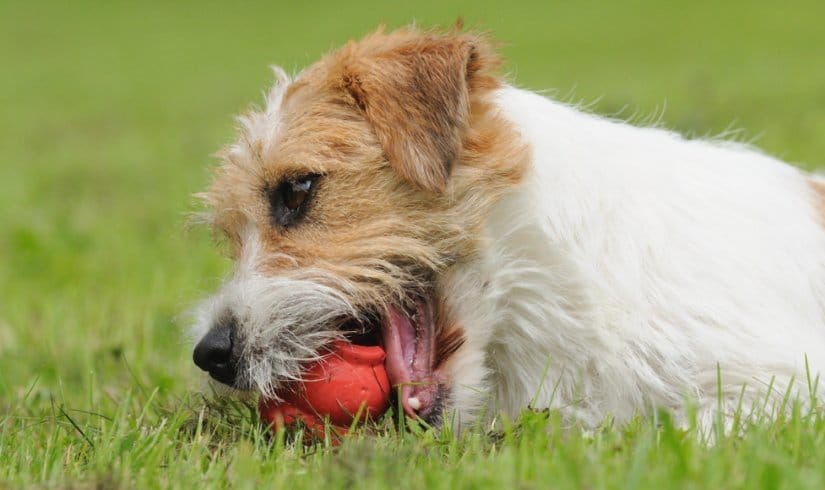
The Kong toy works well for chewing issues, and can be layered with peanut butter or cream cheese. Never punish your pooch for chewing everything, but allow him to have a variety of chew toys, so that he will be occupied and choose those instead to chew on.
Keeping him focused and busy, most especially when you need to leave home, will keep him out of trouble.
Depending on the season, playing outdoors and taking small trips to the beach, dog park or even a Starbucks helps puppies that are stressed or that suffer from separation anxiety. If your furry best friend has anxiety at being left alone try spending that extra one–on-one time with your pooch by having quality time. Consider some rough and tumble play in your backyard to release some of that puppy energy.
If you opt to start training early, teaching your puppy how to “Leave it” when he does chew your favorite shoe. Destructive chewing can also be a sign that your pooch may need to see a veterinarian.
Tapeworms and parasites may just be the reason that your furry best friend started chewing everything again. This is why consulting with your veterinarian works best!
Pup’s are sensitive to their environment, and the people that live with them. They try to please whenever they can. Teaching your puppy house rules from a young age will encourage him to chew only his toys, and to stop chewing everything.
Getting a pet sitter involved in your furry best friend’s daily activities is important if you need to spend more than an hour or two away from home. A 45-minute visit by your pet sitter can help your puppy not to spend too much time alone, while providing the exercise and care that he needs.
Impulse Control with Positive Training and How to Teach Fido Not to Chew Everything
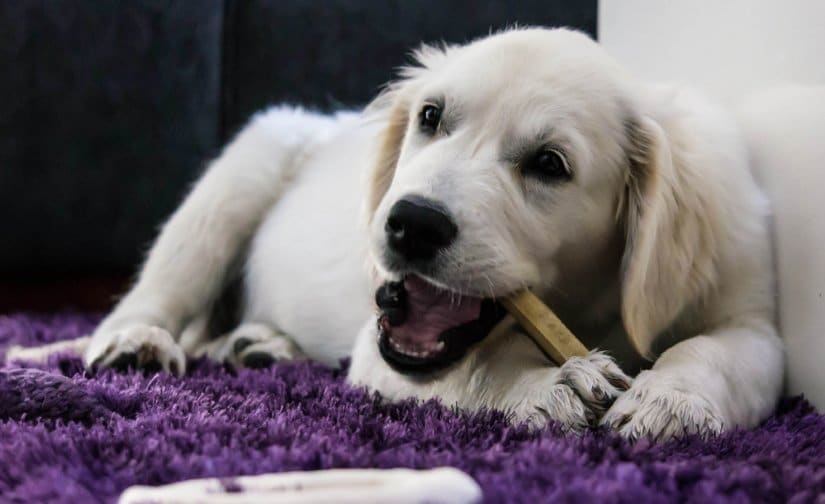
Teaching impulse control to your puppy so that he stops chewing everything is done in a variety of ways. These include the following:
- Preventing the nipping habit by never playing mouth-hand games, and substituting interactive dog toys for your hand prevents him from becoming too excited and biting. Keep in mind that he or she will tend to nip or bite when they are tired, and need a nap.
- Your furry best friend may like to chew on things and carry objects in their mouths. A puppy can, in fact, become a biter. Teaching your puppy, the rules of the house is an ongoing, everyday process. The weeks of consistently teaching good manners, as you watch your him or he growing up with self-confidence and manners will be rewarding. Dogs will usually act in ways similar to his breed traits.
- Mouthiness and biting are totally normal for young dogs. They feel and enjoy the world through their mouth. Mature, adult dogs will mouth an object to identify and understand it. With playful puppies, this natural tendency to chew on things, including people can sometimes get out of hand. Allowing for your pooch to understand that you are pack leader, and that he is living in your pack sets limits. As a pet parent you are replacing the interaction that your new furry best friend would have had with his other littermates and dogs. As a pet parent, it’s important to step in and enforce bite-inhibition training, that is perceived as normal and kind by your puppy.
- Teaching your puppy not to bite on command takes time and patience. When he or she nips at you, hold him gently and look him in the eye, all the time while gently repeating the command. Release him after a few seconds and tell him quietly that he’s a good dog. Go back to playing with him, but if he starts playing with his mouth again or biting, repeat the correction one more time.
- Puppy training has to be done during the puppy stage otherwise problems lie ahead when your furry best friend encounters other people, goes to the dog park or accompanies you for a latte at Starbucks.
- Keeping a happy and safe home means teaching your pooch rules and enforcing them consistently each day. Exercise, gentle discipline and affection are most important in a pup’s life. Setting rules and limitations prevents confusion in your dogs.
- Dogs are pack animals, and their DNA does well with a structured environment. Training your dog and keeping up with simple positive training commands every day helps him understand that rules are important, and helps to avoid confusion with positive training commands.
- Dogs are fast learners; they can figure out when we are going to give them another treat or a time-out because of bad behavior. Dog training does not end when pup’s become adults. Pet parents are always giving off subtle cues that their fur friends can pick up on. Being consistent with exercise, gentle discipline and affection with your pup is key to success.
- Puppies have never experienced the feel of a collar, and will most likely never have been walked on a leash before. Although these restraints will feel strange for him in the beginning, it’s really important that he learns how to walk with a collar and leash on him.
- Begin by gently placing a regular cotton or nylon collar around your dog’s throat. Many puppies do not enjoy this since the neck is the most vulnerable area of a dog’s body. Slowly introduce your pooch to the collar first by leaving it on for a few seconds. Remove it by unbuckling, and then doing it up again. Use plenty of praise each time.
- Do the same thing with the leash. Clip the leash onto the collar and let him run around with it on for a few minutes. Practice by clipping the leash onto the collar and then taking it off several times, always rewarding your puppy each time.
- All dogs should have a training collar and a regular collar. The training collar is only used for training since it acts like a slip collar, and if left on can actually choke him to death, if they snag it on something. Never attach something to the training collar unless it’s the leash.
- There are many different types of training collars: prong, snap chokes, head halters or pinch collars. Use these only when working with your trainer in a supervised environment. With that said, you should only use a collar that’s not too harsh, and has the minimal amount of correction before you choose a more corrective collar like the snap or prong collar. Handlers prefer that pet parents first begin with a flat collar, and then if necessary, change over to a slip or a limited-slip collar.
Dog Remote Training Collars & Electronic Training Collar
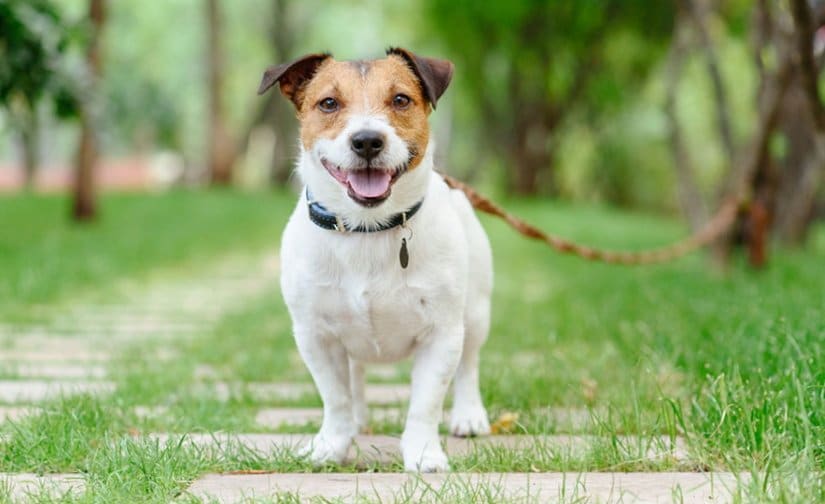
These E-collars are best used after your pooch has learnt the basics of obedience training. Electronic training collars are a training tool. Many pet parents are against using this method. These electronic training collars are also known as e-collars, and they come with a few settings. Pet parents should first strap these around their own necks to test the settings. The lowest setting is a buzz sound and does not give off a shock. If your furry best friend does not obey the lowest setting, pet parents can use the “higher setting”, but need to always first test it on themselves
These collars can hurt a dog, and can even be dangerous. Pet parents first need to have Fido trained in basic obedience, before even considering using the dog remote training collar or the electronic training collar, which are the same types of collars.
Tips for Using E-Collars
Remote dog training collars like E-collars should, if need be, that said reluctantly, only be used on adult dogs, and only by handlers that know what they are doing. The e-collar has become unpopular in Europe and the US, and pet parents and dog trainers prefer using positive dog training methods like the clicker with treats as reinforcement for good behavior.
Although E-collars may help with reinforcing the behaviors that you want for Fido, they should be used with as much caution as possible. That said, they can help with correcting certain unwanted behaviors like digging, chasing, and not coming when called.
The E-collar has a remote with a button that the pet parent can press. When pressed, the dog will receive a mild electronic stimulation from his electronic collar. The frequency must be set on the lowest frequency possible, so as not to harm the dog. The stimulation in turn makes him focus, and allows for you to communicate with your furry best friend clearly and consistently at all times.
- Teaches your pooch to respond to the basic commands like Sit, Come, and Stay.
- It can be used to prevent dangerous behavior, and to prevent pulling, running away, chewing and digging.
- They can be trained from a distance away from you-1,000-yards.
- Two dogs can be trained simultaneously.
- These collars are not recommended to stop barking.
Small Dog Training Collar
These are made for small breeds that are less than 15 pounds. There are many different types of training E- collars for small breeds. These have been made specifically with the weight and size of a small pooch in mind. Small breeds are often difficult to train. These training E-collars are different from the ordinary ones in that they have lower intensity corrections.
Issues with E-collars
Anxiety and fear in all dogs can be linked to the electronic training collar. They can suffer from side effects when we punish them, and the electronic collar can create anxiety disorders if used incorrectly. Fear is always a consequence of punishment in training. These include wide eyes, fear, aggression, raised hackles, backing away from the training collar, shaking, drooling or whining.
Dog Remote Training Collars & Electronic Training Collar
These electronic training collars are also known as e-collars, and they come with a few settings. Pet parents should first strap these around their own necks to test the settings. The lowest setting is a buzz sound, and does not give off a shock.
If your furry best friend does not obey the lowest setting, pet parents can use the “higher setting”, but need to always first test it on themselves. These collars can hurt the dog and can even be dangerous.
Pet parents first need to have their furry best friends trained in basic obedience, before even considering using the remote training collar or the electronic training collar, which are the same types of collars.
Features of the Remote Dog Training Collar include:
- 3 modes for training-vibration tone and shock.
- Adjustable collar that fits all dog sizes from 10 lbs.’ to 120 lbs. They must be used correctly for each size.
- There is an automatic power save on the receiver.
- Different levels of vibration.
- Different levels of shock.
- Lightweight non-obtrusive collar
- Ideal way if used correctly and kindly for training dogs
- 900-1100—feet range of remote training
All remote training or E-collars can be effective, if used correctly. Remote training can help curb and prevent unwanted canine behaviors and responses, nonetheless learning how to use this training tool in a humane way by working with a reputable handler or trainer, will yield more beneficial results for both you and Fido!
Crate Training to Prevent Puppy Chewing
Puppies soon learn to love the comfort and security that the crate offers. Crate training prevents them from chewing up your furniture while in training, and also helps develop a potty schedule. Training your puppy to stop chewing everything is important, and is easily done during crate training where teething toys are placed inside the crate on top of his bed.
Most puppies will not eliminate inside their crates if they are taken out frequently to go potty. Crates should not be used for more than four hours unless you’re traveling with your pooch. All dogs need to exercise and stretch out their limbs. Place your crate nearby you, so that your fur friend is never isolated.
No matter what type of collar you choose, function is always of the utmost importance. Keeping your furry best friend safe during puppy training should be top priority for every pet parent.
While you may be able to effectively prevent Fido from chewing everything in the house with gentle positive training methods and colorful, non-toxic, interactive chew toys, keep in mind that first, and foremost, consulting with your veterinarian and positive dog trainer makes positive puppy training a million times easier!
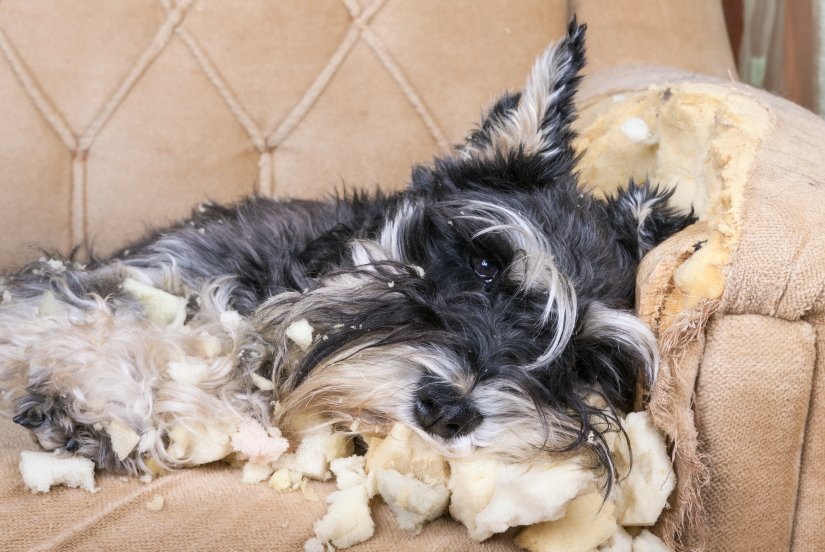
Hello! Please help! I have a Mastiff puppy that chews everything he sees. What can I do?
Hello Deanna
Caring for your new puppy takes time and plenty of patience. First of all, your home and garden has to be puppy-proofed to make sure that your new puppy does not consume anything dangerous that could kill him. Secondly, you’ll need to go shopping for a variety of puppy chew toys, so that your new furry best friend will have a variety of toys to play with and chew.
Chewing your favorite things, and having potty accidents inside the home are what puppies do. You’ll need to start off with positive puppy training methods, and teach your puppy how to be fully house-trained. Some puppy breeds will be mouthier than others like the Golden Retriever.
With these breeds, you’ll need to be extra careful that they don’t chew something poisonous. Working with a positive dog trainer, and having a variety of interactive dog chew toys that can be filled with treats and frozen will also help your puppy with teething pain and boredom. Every new situation will present with different puppy problems. The key is to being patient, consistent and kind.